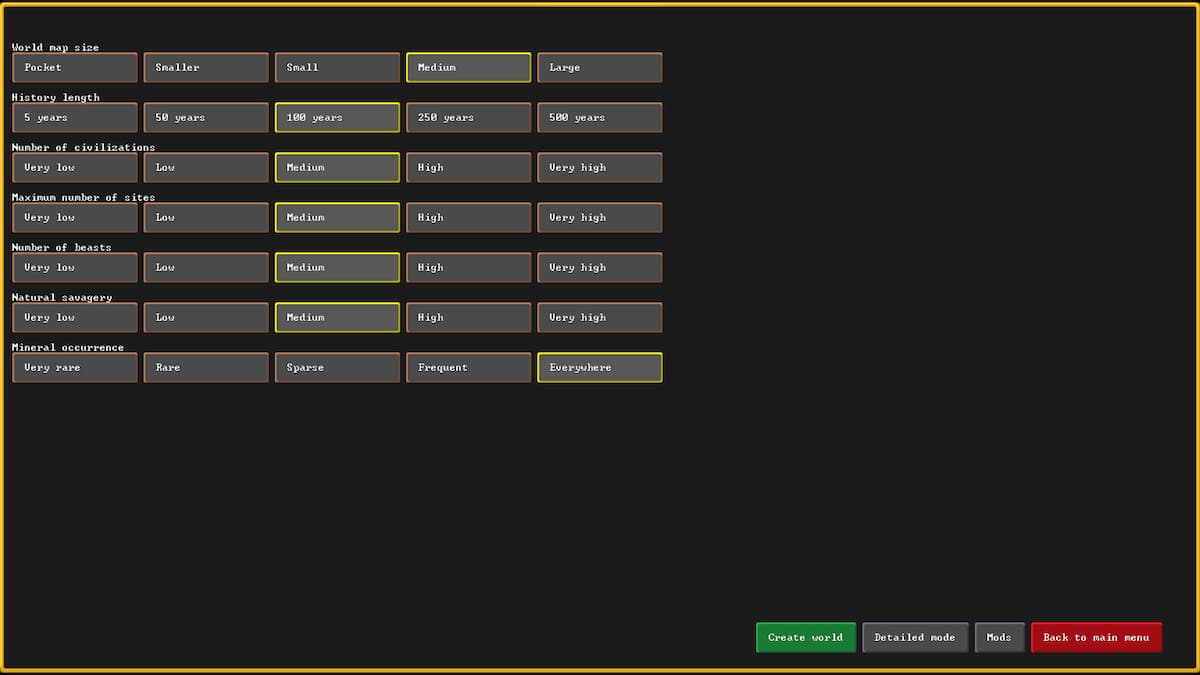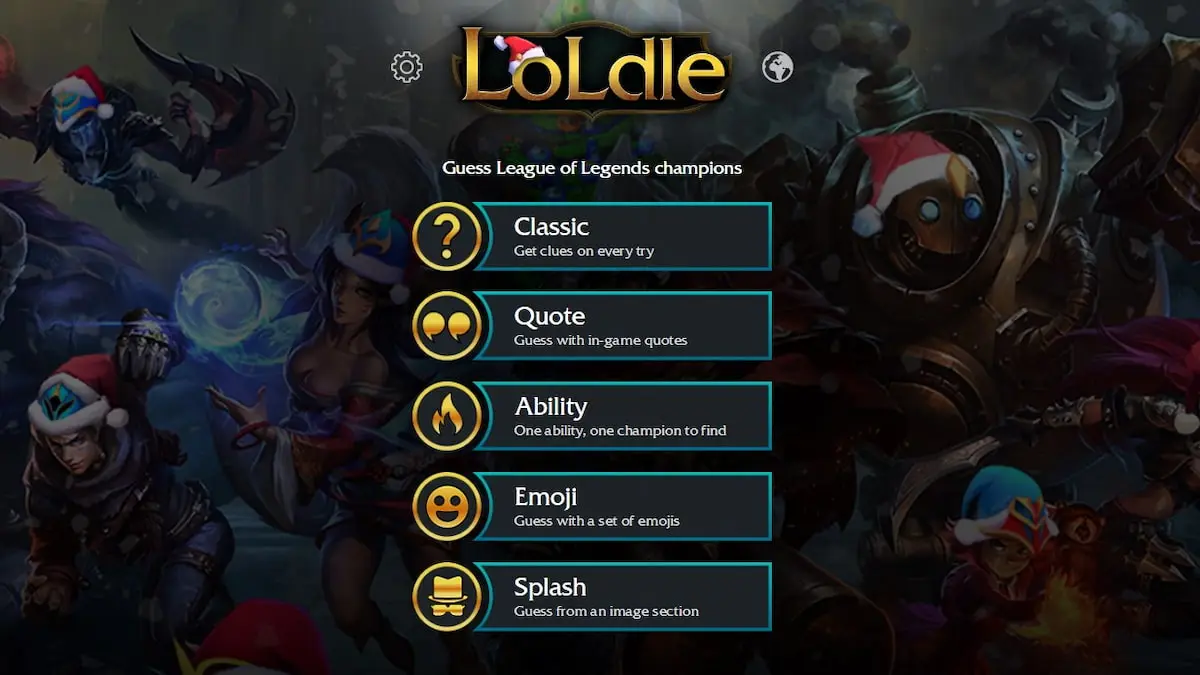Choosing World Generation Settings in Dwarf Fortress is as important to the quality of your game as choosing a balanced breakfast is to your health. Your fortress does not exist in a vacuum, and like it or not the conditions of the world will affect who will be knocking on your fortress door, whether they be nice or mean. Dwarf Fortress simulates a whole history for your world, and so it’s also fun to play with these settings to see how the deep simulation of Dwarf Fortress shifts and changes. This is a guide to the best Dwarf Fortress World Generation Settings.
For Dwarf Fortress Beginners
If you just want a normal experience for Dwarf Fortress, then the base settings the game gives you when you load up your first game are pretty decent for a beginner and should contribute to an interesting game. The default option may not be very exotic, but it’s still a solid world.
However, if you want an easier time, then you’ll want to go with these settings:
- World Size: Medium
- Number of Civilizations: Medium
- History Length: 100
- Number of Beasts: Low
- Natural Savagery: Low
- Maximum Number of Sites: Medium
- Mineral Resources: Everywhere
This will minimize the dangers while maximizing the advantages you’ll have with a large number of resources. Whatever you do, don’t worry about the detailed mode until you have a little more Dwarf Fortress under your belt.
If you’re having performance issues or worldgen is taking too long, it may be wise to shrink the world size and/or number of civilizations.
What Do The Settings Do in Dwarf Fortress?
If you want a bit more information on how the world generation settings work, here is a more comprehensive rundown of the basic options:
- World Size is pretty straightforward. It determines how big your world is exactly. A bigger world means more options for settling, and more stuff going on in that world, but also reduces performance and generation speed.
- History Length determines how long this world has had a previous history before you show up in it. This is where the magic happens, and it allows the world to progress and develop before you even start. What this means specifically is hard to explain without getting into the specifics of how megabeasts, civilizations and powers work, but generally the longer you leave this the more historical events occur. This is also another one to take into account for generation speed, as a longer history can mean a longer world generation.
- Number of Civilizations determines how many civilizations are in the world. These civilizations can interact with you in various ways, from war to trade, and also interact with each other during the generation of an history and during the game. The more civilizations you have, the more complex your world gets. A larger number of civilizations also has an effect on worldgen and its performance.
- Number of Beasts and Natural Savagery work to enhance difficulty but also work to keep the populations of the various civilizations in check. Essentially they determine how many big scary monsters and savage animals, respectively, will be bothering civilizations (including yours). You’ll want these settings at medium in general, but you can turn them up for more challenge.
- Mineral Occurrence determines the distribution of mineral resources in the world. You’ll want this one high for the most part as a beginner.
As for the details settings, it’s best to avoid those unless you know what you’re doing. These are very comprehensive settings that allow you to alter things like rainfall and world temperature directly.
That’s all for a guide to the Best Dwarf Fortress World Generation Settings. If you want more Dwarf Fortress guide content, stick around. We have a guide to the best Dwarf Fortress mods, for example.





Published: Feb 21, 2023 05:44 am